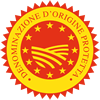Description
The Custoza PDO is reserved for the following types of wine: White, Spumante and Passito.
Production Area
The production area of Custoza PDO is within the territory of the municipalities of Sommacampagna, Villafranca di Verona, Valeggio sul Mincio, Peschiera del Garda, Lazise, Castelnuovo del Garda, Pastrengo, Bussolengo and Sona, in the Province of Verona, in the Veneto region.
Description of product typologies
Custoza PDO Bianco is straw-yellow, at times with greenish reflections; the nose is characteristic with fruity notes, slightly aromatic; it is sapid and delicate on the palate, with good body. Superiore may be displayed on the label if the wine has been matured for at least 5 months, commencing November 1st of the year in which the grapes were produced; maturation must take place within the same area as the vinification processes. It can display Riserva on the label if the wine has been aged for a minimum period of 12 months, commencing from November 1st of the year the grapes were produced in. Custoza PDO Spumante is straw-yellow, varying in intensity and at times with golden reflections, and has a fine, persistent perlage; the nose displays fragrant aromas with fruity notes, slightly aromatic when the wine is made with the Martinotti method, and elegant and complex – characteristics of fermentation in the bottle – when made with the Classic method; it is fresh, sapid, and elegant on the palate, harmonious in the wines ranging from dosaggio zero (no added sugar) to demi-sec. Custoza PDO Passito is golden yellow; it is intense and fruity on the nose; the taste is semi-sweet or sweet, velvety, full-bodied and slightly aromatic. Passito wine can only be produced with grapes which have been dried naturally, although the use of systems and/or technologies is permitted as long as they do not increase the drying temperature in respect to that of the natural process. It cannot be released for consumption before September 1st of the year following that of the harvest.











